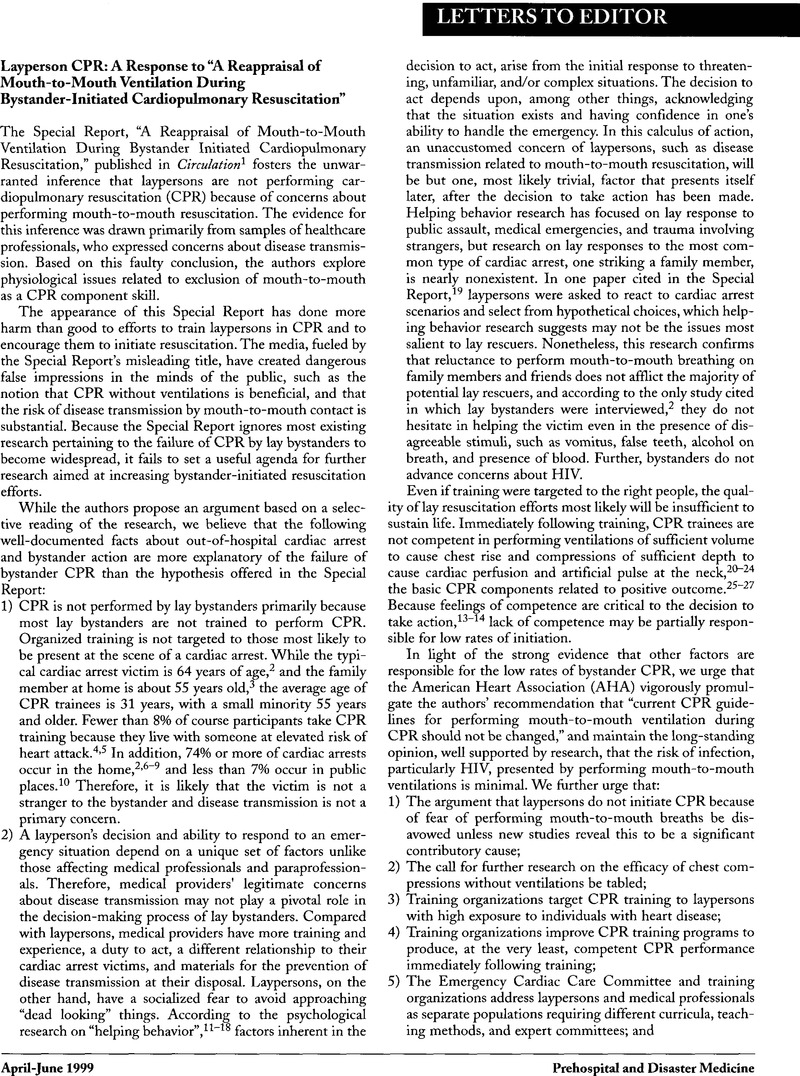Crossref Citations
This article has been cited by the following publications. This list is generated based on data provided by Crossref.
Teague, Gavin
and
Riley, Richard H.
2006.
Online Resuscitation Training. Does it improve high school students’ ability to perform cardiopulmonary resuscitation in a simulated environment?.
Resuscitation,
Vol. 71,
Issue. 3,
p.
352.
Ong, Marcus Eng Hock
Ng, Faith Suan Peng
Anushia, P.
Tham, Lai Peng
Leong, Benjamin Sieu-Hon
Ong, Victor Yeok Kein
Tiah, Ling
Lim, Swee Han
and
Anantharaman, V.
2008.
Comparison of chest compression only and standard cardiopulmonary resuscitation for out-of-hospital cardiac arrest in Singapore.
Resuscitation,
Vol. 78,
Issue. 2,
p.
119.
Patel, Hiren
Mahtani, Arun Umesh
Mehta, Laxmi S.
Kalra, Ankur
Prabhakaran, Dorairaj
Yadav, Rakesh
Naik, Nitish
and
Tamirisa, Kamala P.
2023.
Outcomes of out of hospital sudden cardiac arrest in India: A review and proposed reforms.
Indian Heart Journal,
Vol. 75,
Issue. 5,
p.
321.



